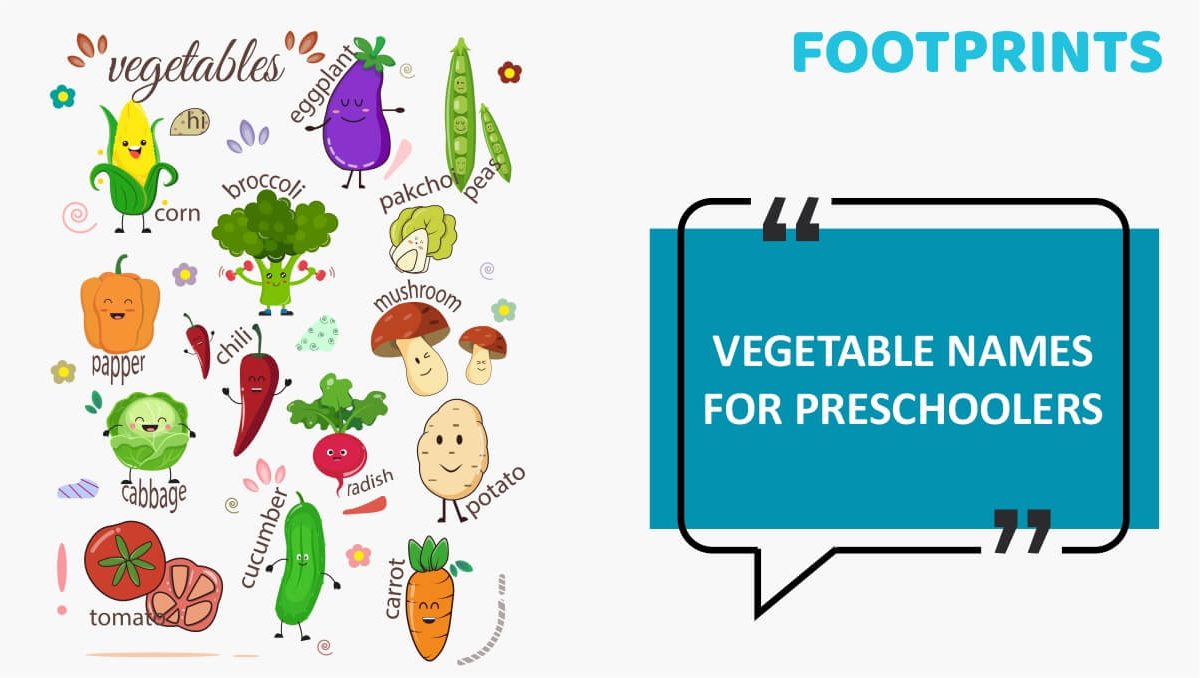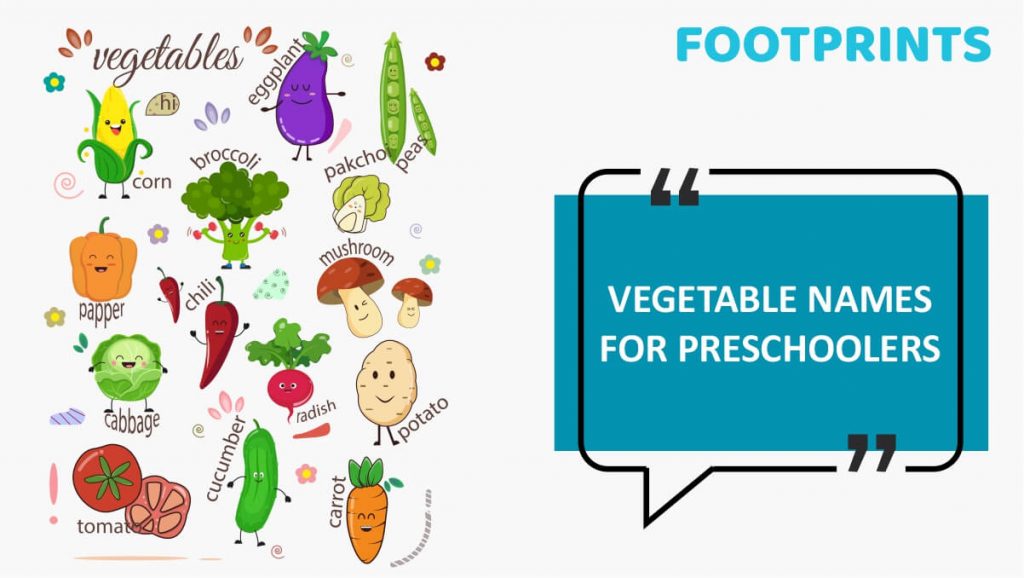

As parents and educators, we recognize the importance of instilling healthy eating habits in children from a young age. One effective approach is to acquaint them with various types of vegetables and their names. This not only aids in expanding children’s vocabulary but also establishes a foundation for a lifelong commitment to healthy eating choices. In this article, we’ll delve into why vegetables are significant and why children need to learn about them and provide you with a comprehensive list of vegetable names. So, let’s dive in and explore the colorful and nutritious world of vegetables together. By the end, you’ll be convinced that teaching preschoolers about vegetables is integral to their education.
What Are Vegetables?
Vegetables are a vital component of a healthy diet, as they are the edible parts of plants packed with essential nutrients, vitamins, and minerals. Some common vegetables include carrots, broccoli, tomatoes, and spinach. These vibrant foods contribute to physical health and stimulate mental growth.
Why are vegetables so important? Well, here are a few reasons:
1. Nutrient Powerhouses: Vegetables are nutrient-dense, providing vitamins and minerals necessary for overall health. They contain vitamins A, C, and K and minerals like potassium and folate.
2. Fiber: Vegetables are rich in dietary fiber, which aids digestion and prevents constipation, a common issue among young children.
3. Antioxidants: Many vegetables contain antioxidants that help protect the body from diseases and boost the immune system.
4. Healthy Growth: The nutrients in vegetables are vital for the growth and development of children; they support healthy bones, skin, and vision.
5. Establishing Good Habits: Encouraging a love for vegetables early in life can set the stage for a lifetime of healthy eating habits.
Why Should Children Know About Vegetables?
Introducing young children to vegetables goes beyond simply imparting knowledge about healthy food options; it entails fostering their comprehension of the world, diverse cultures, and the natural environment. Here’s why this is crucial:
1. Health and Nutrition: Preschoolers who know about vegetables are likelier to choose nutritious food. They understand that vegetables are good for their bodies and minds.
2. Cultural Awareness: Learning about different vegetables exposes children to diverse cultures and cuisines, making them more open to trying new foods and appreciating the variety of global culinary traditions.
3. Nature Connection: Understanding that vegetables grow in the ground fosters a connection to nature, encouraging children to appreciate the Earth and its resources.
4. Educational Foundation: Knowledge of vegetables lays the groundwork for broader educational concepts like plant life cycles, botany, and the science of growing food.
List of Vegetable Names
Let’s get into the fun part – a comprehensive list of vegetable names. These are not only nutritious but also fascinating for children to learn:
1. Carrot: These vibrant orange veggies are delicious and excellent for eyesight.
2. Broccoli: Known for its tree-like appearance, broccoli is a fantastic source of vitamins and minerals.
3. Tomato: Often thought of as a vegetable, tomatoes are technically fruits. They are versatile and used in countless dishes.
4. Cucumber: Cool and refreshing, cucumbers make a great addition to salads and snacks.
5. Spinach: This leafy green is famous for giving Popeye strength, and it’s packed with iron and vitamins.
6. Peas: These tiny, green orbs are fun to eat and nutritious.
7. Bell Pepper: With vibrant colors like red, yellow, and green, bell peppers are rich in vitamins and antioxidants.
8. Potato: Potatoes come in various forms, from French fries to mashed potatoes. They are starchy and filling.
9. Eggplant: Known for its deep purple color, eggplants are used in various dishes, from ratatouille to moussaka.
10. Zucchini: Zucchinis are often used in baking and can be a fun addition to various recipes.
11. Mushroom: While not technically a vegetable, mushrooms are a unique addition to this list. They have a distinct taste and texture.
12. Lettuce: Lettuce is the base of many salads, and there are different types like iceberg, romaine, and arugula.
13. Cauliflower: Cauliflower is versatile and can create various dishes, including cauliflower rice and pizza crust.
14. Onion: Onions add flavor to numerous dishes and come in various types, like red, white, and yellow.
15. Garlic: Garlic is known for its intense flavor and is often used in savory dishes.
16. Radish: Radishes are small, crisp, and colorful, making them a fun addition to salads.
17. Corn: Corn is a favorite among children, whether on the cob or popcorn.
18. Green Beans: Green beans are a great source of fiber and vitamins.
19. Asparagus: These green spears are both delicious and nutritious.
20. Pumpkin: Often associated with Halloween, pumpkins are also used in pies, soups, and more.
Different Types of Vegetables
There are different categories of vegetables, each offering its unique set of nutrients and flavors. Here’s an overview:
1. Root Vegetables: These grow underground, including carrots, potatoes, and radishes. They are often rich in vitamins and carbohydrates.
2. Leafy Greens: Leafy vegetables like spinach, lettuce, and kale are packed with vitamins and are great for overall health.
3. Cruciferous Vegetables: Broccoli, cauliflower, and cabbage belong to this group. They are known for their cancer-fighting properties.
4. Starchy Vegetables: Potatoes and corn are examples of starchy vegetables that fill and provide energy.
5. Allium Vegetables: Onions, garlic, and leeks belong to this group and are known for their distinctive flavors.
6. Solanaceous Vegetables: Tomatoes, peppers, and eggplants are part of the solanaceous family.
7. Podded Vegetables: Peas and beans are podded vegetables, often used in various dishes.
Conclusion
Incorporating knowledge of vegetable names into preschool education fosters healthy eating habits and opens up possibilities. Children familiar with vegetables are likelier to make nutritious food choices, appreciate different cultures, and connect with nature. Moreover, this understanding lays a solid educational foundation for future learning. As an advocate for early childhood education, I believe that teaching preschoolers about vegetables is vital for their overall growth and development. It’s a small step that can lead to a lifetime of healthy choices and a profound appreciation for the world around them.

Amita is an experienced educator with over 30 years of experience. She has an outstanding understanding of child development, having worked with various age groups for prestigious businesses. She has been dedicated to handling Footprints’s Curriculum and Delivery department for the past decade. Amita’s credentials include being one of India’s few HighScope Curriculum certified trainers and volunteering as a course leader for Landmark Education, the world’s largest training firm.

